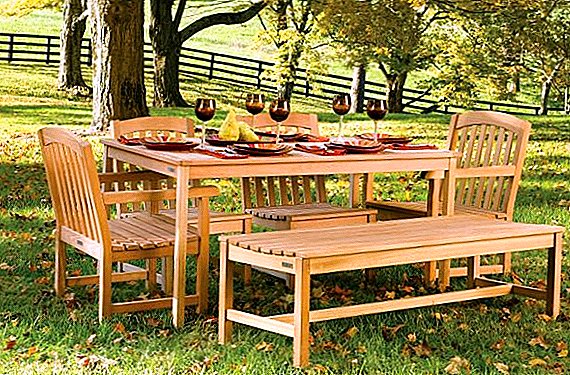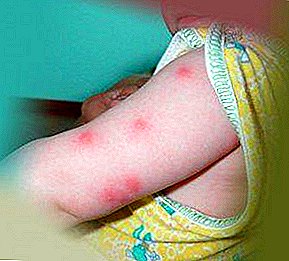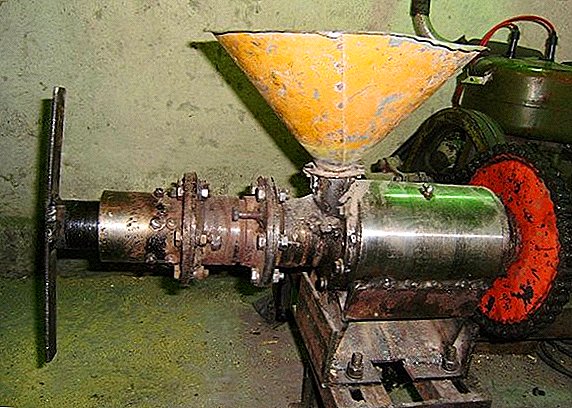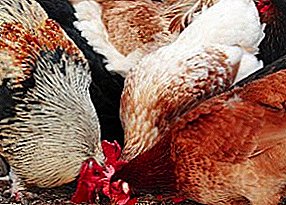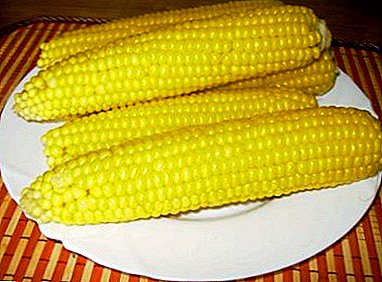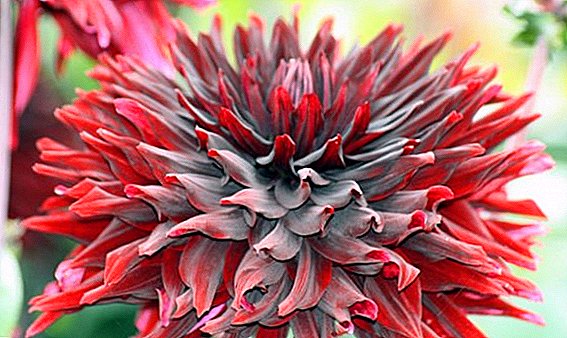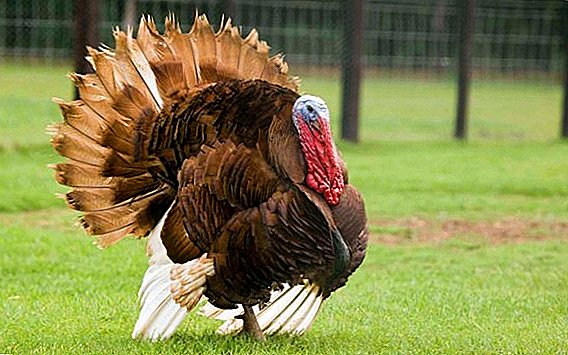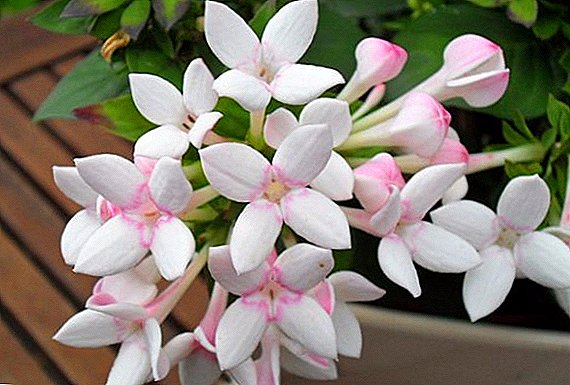 Mysterious plant originally from the American subtropics is becoming increasingly popular among flower lovers. The flower is often used in wedding bouquets and boutonnieres. There are many questions on the forums about the care and cultivation of bouvardia. In this article we have collected the most necessary information that will allow you to grow a beautiful bush with fragrant flowers on your own.
Mysterious plant originally from the American subtropics is becoming increasingly popular among flower lovers. The flower is often used in wedding bouquets and boutonnieres. There are many questions on the forums about the care and cultivation of bouvardia. In this article we have collected the most necessary information that will allow you to grow a beautiful bush with fragrant flowers on your own.
Bouvardia: General Information
This species belongs to the genus Bouvardia, which is a member of the Marenov family (Rubiaceae). Bouvardia is common in Central America and Mexico. Externally, the flower is an evergreen, small shrub, less often - a herbaceous plant.

It has a rapid growth. The maximum height of the shrub can reach 1 m. The genus includes about 50 species. Today, the Bouvardia flower is grown not only in botanical gardens, but can also be successfully cultivated in ornamental horticulture.
Did you know? If one day you have a dream in which you see this flower, then you should know that this is a precursor of changes in your personal life. Since the flower is very often used in wedding bouquets, a dream often promises a wedding celebration or a meeting with its destiny.
Types for home floriculture
The Bouvardia plant was cultivated more than a hundred years ago, but several species are successfully used in home gardening.
- Bouvardia longiflora.

- Smooth-flowered bouvardia (Bouvardia leiantha).

- Garden Bouvardi.

- Home Bouvardia (Bouvardia x domestica).

Optimal conditions for growing
As a typical representative of the humid tropics, Bouvardia needs special growing conditions. The care of buvardia and its cultivation is not a laborious process, but ignorance of important nuances can lead to the destruction of the bush.
Lighting
Bouvardia whimsical to the sun, the best orientation for its placement will be the western and southern side of the room. This flower is suitable place where there will be enough sunlight. Then you can count on the active formation of flower buds. Bouvardia is also very thermophilic, but heat and direct sunlight can destroy the plant.

Temperature
The best temperature indicator for Bouvardia is 22-25 ° C. The flower is not afraid of drafts. In winter, it is recommended to reduce the temperature to 10–12 ° C, since this will have a favorable effect on the future flowering of bouvardia.
How to care at home
Bouvardia is unpretentious, so caring for her at home is reduced to performing the necessary procedures for any plant: timely watering and moistening the air, fertilizing and correct pruning.
Proper care is a very important part in growing klerodendrum, tsiperus, havortiya, kampanuly, plumeria, scinapsus, indian azalea.
Watering
During the period of active growth, it is recommended to water the bouvardia as often as possible, moderately moistening the soil in the pot. Particular attention should be paid to drainage, as excessive moisture can cause rotting of the flower root.
With the help of a regular toothpick you can easily check the soil for dryness. Dip it into the ground, if, when the toothpick is deepened by 2-3 cm, there is no land left on it, then it is time to water it. By its nature, Bouvardia is moisture-loving, however, in the winter period, the frequency of watering is reduced, and to humidify it is recommended to use warm water.

Air humidity
Favorable moisture for the plant - 60-70%. Buvardia loves systematic spraying from a spray bottle. And during flowering, it will be favorable to find a flowerpot near a small artificial fountain or a vessel with water.
Soil and feeding
Bouvardia quite unpretentious to the ground. It will suit the standard soil for flowering plants. But you can make the substrate yourself. This requires the following components: peat land, leaf, turf, land mixed with coarse sand. The general formula for the ratio is 2: 1: 4: 1.
Feed the bush should be during growth, as well as during the growing season. For feeding, it is recommended to use various minerals that have a beneficial effect not only on the growth of the plant, but also on its vital activity. Top dressing during the flowering period should be made three times a month.

Pruning
Some types of bouvardia are specially grown for pruning. One of these species is the long-flowered Bouvardia. Such plants are often used in compositions. Pruning bouvardii should be carried out only in the fall or early spring, as well as after flowering.
Like many other evergreens, such as boxwood, the bouvardia also needs to be shaped into the correct shape, which helps activate growth. It is recommended to cut the twigs in half. The form that the evergreen Bouvardia will have will depend only on the gardener's imagination.
Transplant rules
Experienced gardeners believe that bouvardia should be replanted when the old pot is already cramped for it.
Important! In the second year of life, the most beautiful and abundant flowering occurs in Bouvardia. Further flowering may be scarce, so it is best to grow this plant as a two-year.

The best time for a transplant is spring. Most often, only the plant whose life span is about 1 year is transplanted. For such Bouvardium, gardeners select a larger diameter container. It should be remembered that a good development of Bouvardia depends on how well the soil is nutrient and permeable to water and air.
It is interesting to read about the intricacies of reproduction of other plants: orchids, zamiokulkas, dieffenbachia, cheflers, laurels.
Buvardia propagation at home
Bouvardia is possible propagate in one of the following ways:
- Root. Cut off a piece of the root and plant in ordinary soil.
- Cuttings. Cut a 10 cm long stalk from the young processes of the Bouvardia and plant them in a nutrient soil, the composition of which is given above. Use cuttings should be from Bouvardia, which is in the shade. This method is the easiest. The tops rooted very easily in ordinary water. To do this, gardeners often use stem cuttings left after pruning. When young shoots cut off from 2-3 internodes form roots, they are planted in the ground, which is also used for ordinary adult bouvardia.
- The division of the bushes. The most unreliable way, as it does not lead to the renewal of plants and lush flowering.

How to deal with pests and diseases
Bouvardia, like other plants, is subject to attacks of diseases and pests.
The main pests for Bouvardia are the aphid and spider mite. It is important for the gardener to detect insects in time and use appropriate preparations that can be purchased in specialized stores.
If you prefer home-based pest control, the best way is to use a warm shower with a soap, alcohol or oil solution. Particular attention should be paid to leaflets Bouvardii when grown.

Since the first sign of disease plants are yellow leaves. This is an infectious spot, which can lead to drying of the bush. To prevent such negative consequences, a daily inspection of the leaf cover of the bouvardia is required. Any leaf with a clear spot should be removed, and if the plant is affected by the disease too quickly, you can apply Bordeaux mixture.
The best drugs for pest control are biological products (not containing chemicals). It is recommended to use the available drug "Fitoverm" to combat aphids.
From folk remedies intended to combat aphids, in addition to the soap solution, you can use a simple onion extract in cooking, for which you will need 30-35 g of crushed onion heads. Infuse the mixture in 1 liter of water for about 5 hours. Grate in a solution of 4-5 g of soap. Increase the volume of water to 1 l and process the plant.

Important! When treating a plant for aphids with a soapy solution, it is very important to remember that the leaves should be washed only from the outside, since contact with the soap solution on the lower side can lead to clogging of stomata. This will disturb gas exchange and damage the plant.The fight against spider mites will depend on the time of its occurrence. If a tick settles on a flower not so long ago, then regular rubdowns with a damp sponge of leaves will do. If the tick has hit fairly large areas of the plant, then such control measures:
- Affected leaves should be carefully removed.
- Before watering it is necessary to remove the entire web for better water penetration.
- Buy rosemary essential oil at the pharmacy. Add 1 drop to 1 l of water and wipe the leaves with this solution.
- Biological preparations "Afik", "Fitoverm".
- Insektoakaritsid "Aktellik".

Did you know? Every flower in nature has its own meaning. For example, the belladonna, in translation from the Victorian language of flowers, means "beautiful woman", the tea rose is considered a symbol of separation and allegedly tells us: "I will never forget you." In turn, Bouvardia in Victorian means "enthusiasm."Be inspired by the beauty, exquisiteness of such an unusual plant, and your efforts will be rewarded with abundant and fragrant flowers.


